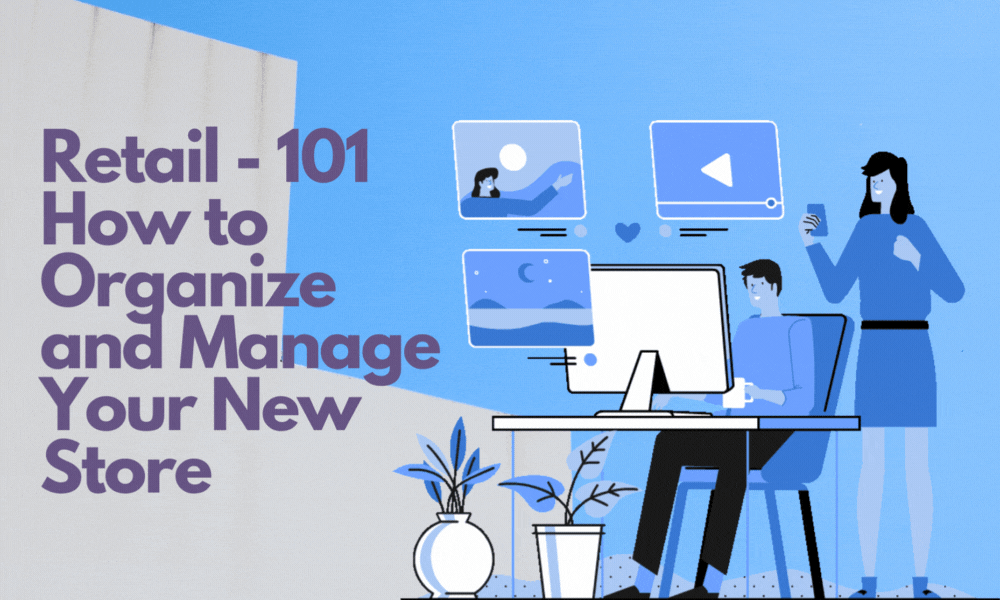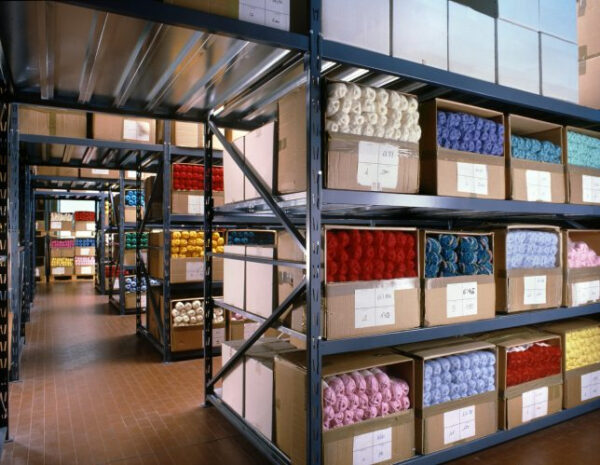Practical and relevant shop management is one of the essential factors in guaranteeing the success of your business. However, it covers a great deal of territory, including growing your team, sourcing and managing inventory, scheduling, boosting sales, developing shop policies and procedures, setting an example, and promoting your business.
14 Tips to organize and manage your new store
Here, we will examine all the components an owner of the business has to look into to manage their store, keep operations operating efficiently, and position the company for development and expansion.
1. Develop and maintain a powerful team
Managing a retail store begins with assembling and retaining a strong workforce that can assist you on the sales floor and contribute to your firm’s growth. As a retailer, you will likely see considerable staff turnover as a regular aspect of the industry, but losing an employee is costly for your company; therefore, you have two goals:
First, you must recruit a sizable team that is effective and a good match for your organization and the available positions.
Second, you must develop a work atmosphere that will help you retain and maximize the potential of this team.
2. Recruit a team that complements your brand
When building your team, you should choose individuals that can effectively represent your company. Typically, this implies that the ideal employee has interests that fit with the things your shop sells; they will be able to market your products more effectively and connect more authentically with clients based on their interests.
As you conduct job interviews and search for the ideal staff for your shop, compile a list of the characteristics of a perfect candidate. A list of ideas is an excellent approach to direct your interview process and locate individuals who will effectively reflect your brand. You may choose to add the following to your list:
Product knowledge: You need someone knowledgeable about your products or business so that they can answer the queries while selling.
Enthusiasm: You want a person who genuinely cares about your business and the things you sell.
Experience: You should look for a candidate with sales experience, ideally in your field.
Customer interactions: You need a salesperson that can converse with customers, help them, and treat them with care. People skills will play a significant part.
Therefore floor interviews are suggested.
3. Consider scheduling
When recruiting your staff, consider availability. Retail stores are open later than 9-5, on weekends, and many holidays. Before hiring someone, ensure you have adequate employees for weekends, holidays, and evenings.
Make a weekly plan to see how many workers you need for each shift. On Friday morning, you may only need one employee, but in the evening, you may require three. For holidays, plan personnel months and hire quickly.
Your staffing needs will periodically alter as you gain experience, depending upon your shop type. Schedule and hire based on store traffic.
Use retail scheduling software. For example, the Agendrix scheduling software for retail saves time and money and improves team communication. Reduce labor expenditures and manage staff demands with one click.
4. Onboard and train your staff
After hiring workers, train them effectively. To win staff trust, create an onboarding training plan with weekly checklists.
Master all computer settings in a week to save time. Third week: practice shop organization and operations. By the third week, you should know if new hires can work single shifts.
Keeping a structured checklist ensures no one misses any training and offers new hires a reference point—return processes, complaint regulations, customer communication, etc.
- Open/close new goods, references, etc.
- Suggestions, upselling and cross-selling, bestsellers, etc.
- Taking orders, processing refunds, printing tags, running reports, getting daily numbers, etc.
- New members, information, signups, etc.
- Overtime money, discounts, commission, odd hours, etc.
After two to three weeks of retail training, workers can work alone. You should be available for questions, but new hires should feel assured.
Retail success requires ongoing training. A united retail team needs regular training on new goods and initiatives, on-floor coaching and feedback, and role-playing customer service scenarios.
5. Inventory-control
Retail management includes inventories and teamwork. Inventory management maintains shelf stock that involves forecasting stockouts, arranging reorders, creating open-to-buy plans, and budgeting.
Monitor low inventories using a real-time POS system. Spreadsheet inventory.
Frequent inventory counts are required and should include aging inventory management to identify slow-moving items and adjust ordering accordingly. Inventory counts demonstrate what you have on hand, not simply what the computer claims.
Two inventory counts exist:
Counting a little portion of your inventory daily, week, or month makes it more accessible.
High-value or high-turnover commodities are measured more regularly.
A yearly inventory count is done for tax purposes.
First, determine product quantities depending on what you ordered and sold. POS systems estimate the amount with each sale. Otherwise, compute.
Then count your actual stock to compare the two.
6. Source your wastage
Inventory shrinkage is the discrepancy between actual and expected inventory numbers. Find the source of shrinkage to avoid it.
Three shrinkage sources are found usually.
Check for faulty sales or security video to discover employee theft. Theft leads to quick termination, setting a precedent for your team.
Taken down security or price tags, empty hangers, out-of-place merchandise, and camera video can help detect customer theft. Please provide your employees with a photo of the thief so they can monitor him. Shoplifting allegations seldom stick.
Clerical error: Incorrect inventory records mean you don’t know inventory levels. To find out, check your receiving counts and transaction history.
Once you determine your shrinkage source, you may enhance inventory management or avoid retail theft.
7. Stockroom organization
Source
Organizing your stockrooms, so things are easy to find is also vital for inventory management. This will help your staff discover stuff and enable you to keep more in less space.
A well-organized, adaptable stockroom prevents shrinkage.
First, buy storage fixtures. After choosing fixtures, pick an organizing system. No two stores will have the same system; it relies on your operations and what makes sense. My top stockroom organization tips are:
Identify everything.
Make your inventory system adaptable.
Create an easy-to-learn method for your workers.
Foldable clothes and pants should be in containers with detachable labels. Hang the remainder of your stock by color, sleeve length, and clothing type. Removable labels and extensive organizational divisions make this system easy to update and flexible. The workers could easily maintain the straightforward, well-marked system.
8. Strong product sourcing network
Consider your network of goods providers while managing inventories. Having a list of reliable vendors ensures you can receive the necessary supplies and invites for online markets and trade exhibitions.
Online sourcing is handy, but tradeshows are better. Here, connected wholesalers congregate so merchants may shop their items and undertake seasonal purchasing. This is a terrific chance to see products and meet vendors.
Connect with as many vendors as possible to stock your shelves while ensuring you have backup plans and aren’t dependent on one supplier.
9. Data-driven sales goals
You should set sales goals to run your store. Set periodical goals for your team. Keep objectives visible and daily that boosts team morale.
If you don’t have sales data, utilize your retail budget. Your budget should show you how much to sell to earn a profit.
Develop sales goals using past sales reports. Setting sales goals 5-10% higher than last year’s will assist you in deciding if you’re expanding.
Consider weekdays while setting daily goals. Fridays and Saturdays are merchants’ busiest days, while Sundays and Tuesdays are the slowest. Create and analyze sales objectives based on the day of the week.
10. Keep track of sales with weekly reports
Retail sales are reported weekly, which helps handle each week’s concerns. A store owner can use weekly sales data to hire management.
As your business increases, you may need to hire a manager to free up your time. You may manage your shop using your acting manager’s weekly sales data.
• Check daily, weekly, monthly, and annual sales goals.
• Note low-stock or popular/unpopular goods.
Note scheduling concerns, fantastic personnel, or trouble areas.
• Record week’s utilized or low supplies (cleaning supplies, employee snacks, hangers, tags, etc.).
• Evaluate past occurrences to plan future ones.
• Allow employees to give anonymous comments for management/ownership.
11. Establish clean, organized store procedures
Retailers must keep their stores clean and orderly. This involves maintaining stock and shop decor, putting away trash, and cleaning. A tidy storefront makes buying easier.
Make a list of open/close processes and everyday chores.
Keeping organized with to-do lists—two to four cleaning and organizing tasks daily. Mondays are for dusting, cleaning, and restocking. Tuesdays, clean the store’s glass.
This method involves 45 minutes of daily cleaning each week. Consider how you’d clean and arrange your business. Divide tasks by weekday.
Fridays and Saturdays are busy. On certain days, omit extensive cleaning. Your Sundays and Mondays will be happening.
12. Lead your team
Retail management involves setting the store’s atmosphere and philosophy. Your daily customer service, store maintenance, and appearance affect your staff’s performance.
Retail management leadership is recognizing and appreciating employees. Good leaders set an example making everyone happier and boosting corporate morale.
Reward your employee
Reward, or commission structures motivate employees. Team and individual accomplishments should be rewarded, in my experience. Individuals who meet a monthly sales goal may receive a commission and a team incentive.
Less formal incentives like gift cards, small indulgences for your top performance of the week, or lunch or get-together after a fantastic sales day may assist.
Motivating and appreciating your team will make work more enjoyable.
Proactively Be receptive to employee interactions, questions, and concerns. Small-business owners may handle HR. Create a space where employees may discuss and be heard.
Safe workplaces keep employees. Respect employees’ requests and be transparent about store rules and job satisfaction.
Lead by example
Actions speak louder than words. Managers set the tone of leadership that influences your workers’ performance and job understanding. You should be the best salesperson, CSR, cleaner, and most motivated worker.
13. Launch marketing and outreach campaigns
Customer retention and expansion are vital to increasing your business and income. While both goals need marketing and customer outreach, retail marketing may boost consumer loyalty, attract new audiences, and increase sales.
Here are ways to combine retail marketing with store management:
Neighborhood involvement
Loyalty programs work
SMS & Email Marketing Inform Customers
Social media may increase your customer base. You can post various video formats using a video converter to generate different video formats of your brand to post on social media platforms to engage more customers.
Meet the neighbors. If you create ties with your neighbors, you may share customers and profit—partner for events, pop-ups, marketing materials, referrals, and growth.
14. Consider expansion
Your store should continuously be looking for new chances. As your business expands, expand. This may mean maintaining more inventory and spending on marketing to build your consumer base. You may outgrow your first storefront and need a new one.
Bottom Line
Managing a retail shop involves a lot of work. Pay attention to everyday operations, employees, product procurement, and expansion. Effective management helps your store achieve its goals. Use Agendrix to construct a retail schedule. It centralizes staff availability, leaves requests, and labor expenses. You can operate your shop smoothly with these tips.







Leave A Comment
You must be logged in to post a comment.